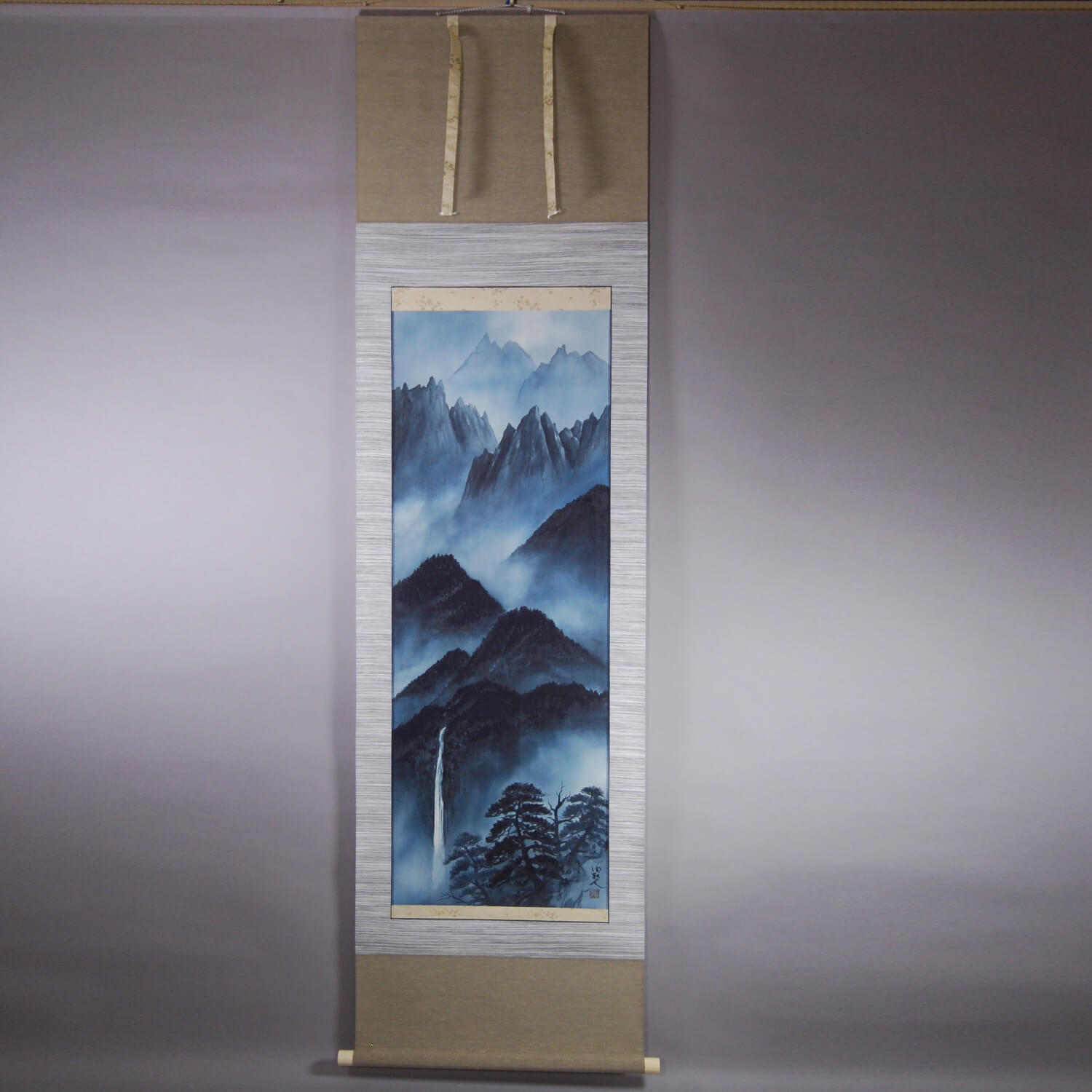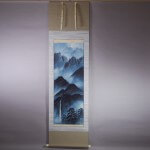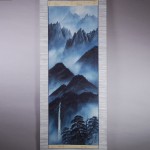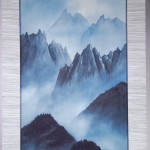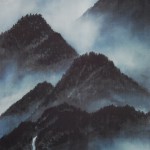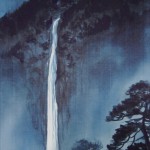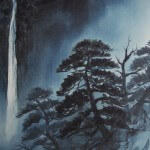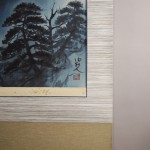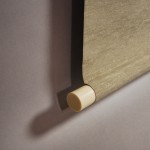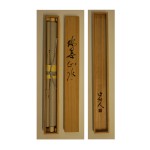Products Lineup
News / Blog
Other Menus
Kakejiku Hanging Scroll: Landscape Painting in “Sumi” (ink) / Yuri Tezuka - Suiboku Sansui
- Product ID
- 0019
- Name
- Yuri Tezuka
- Profile
1946-
An associate member of the Nitten Exhibition- Size
- 600mm x 2000mm
- Roller End Material
- Artificial ivory
- Material of the Work
- Silk
- Stock Condition
- Sold out
- Description
Many Japanese paintings for kakejiku have vertical compositions because “kakejiku” (hanging scrolls) are displayed and appreciated in a “tokonoma” (alcove). In Western art, landscape paintings are usually wider than they are tall, but in Japan, many landscape kakejiku are taller than they are wide. These compositions are very difficult to design. I think there is no other country where so many paintings with vertical compositions have developed since ancient times.
This work is painted with ultramarine “sumi” (ink) by Yuri Tezuka. She depicts the steep, rocky mountains with powerful brushstrokes. The mountains are depicted as if they were piled up, which makes them seem steeper. The waterfall feels taller as well. This is a work which utilizes a vertical composition effectively.

